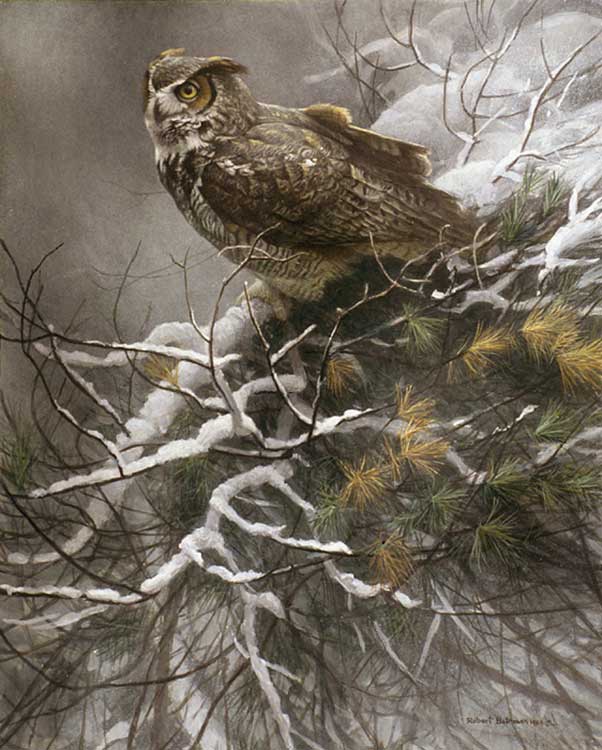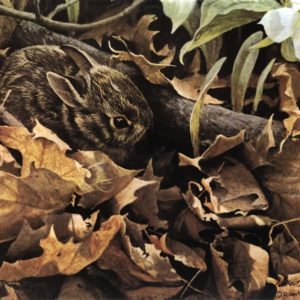Description
Winter Pine Great Horned Owl – 24 7/8″ x 19 3/4″ – 1250 Edition Signed and Numbered Paper Prints
“As a boy, I would ride my bicycle out of the city and explore the woods for hawks and owls. Winter was the best time of year to spot them when most of the trees were bare. But because of the shelter and protection afforded by the white pines, that is where the great horned owls would be found roosting. usually I would explore the pine woods with my eyes on the ground looking for pellets… the regurgitated fur and bones of the mice they had just eaten. It is very difficult to spot an owl concealed in a pine, but just being in the peaceful, aromatic forest would be a treat in itself. I have done six paintings of the
great horned owl, and five of them have been in white pines. This is not because of some master plan or lack of ideas, it is because all of my life I have loved owls and loved white pines. The two are associated in my mind.
This painting shows a great horned owl, not in concealment, but in a more active pose. It is perched on a piece of broken pine branch which has blown down in a storm. I like the way the rhythm of the branches and needle clumps echo the thrust of the owl.
Owls have long been creatures of myth and mystery. The ancient Greeks associated them with Athena, the goddess of wisdom – hence the expression “wise as an owl.” In other cultures they have been held in awe or viewed with fear. Sometimes they are seen as heralds of victory or harbingers of good luck; at other times they are thought of as ill omens foretelling disaster. The aura of mystery surrounding owls is heightened by two of their characteristics:
the fringed feathers at the ends of their wings allow them to fly almost soundlessly, and, with a few exceptions, they are nocturnal and therefore often very difficult to see. The largest of our owls, the great horned owl, is a creature of the dark night and the deep forest that nests up high, usually in an abandoned hawk’s nest or in a tree cavity. I have spent many hours searching for this fierce hunter, which will catch and eat birds as large as a small goose and mammals as fleet as the snowshoe hare. It also dines on porcupine and skunk. If I’m lucky, a noisy mob of crows especially reprehensible. (They have good reason for this, since by night crows become one of this owl’s prey.) If they find a great horned owl trying to take a nap, they wild scold it relentlessly.” – Robert Bateman
Winter Pine Great Horned Owl is available
Biography
Robert Bateman has been called the most famous living artist. He continues to paint and tour the world to promote conservation and preservation of nature. We have represented Robert Bateman for decades and are now the sole publisher and distributor of his reproductions. We are so honored to work with him and witness his success. He has made such a massive contribution to the art world and the natural world as an artist and educator of the earth’s most important resources.
Nature as a subject is becoming more and more popular as our environment is in peril. What better subject is there than the beautiful creatures we share this world with? Robert Bateman’s appreciation and understanding of nature are apparent in his paintings. He is able to paint flora and fauna the way your eye would perceive it in real life. It is important that the animal takes full attention. The background becomes muted, and therefore it doesn’t take too much focus away from the subject. His paintings seem effortless and masterful all at once.
Bateman’s eye for composition is unparalleled. Each painting is a composed like a symphony, leading the eye to wander. From the backyards of North America to the sprawling plains of Africa. Robert Bateman captures nature the way it should be enjoyed. Above all he is a champion of wildlife. For this reason he has become a household name for art collectors.


